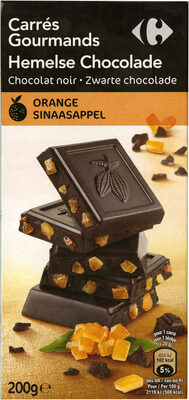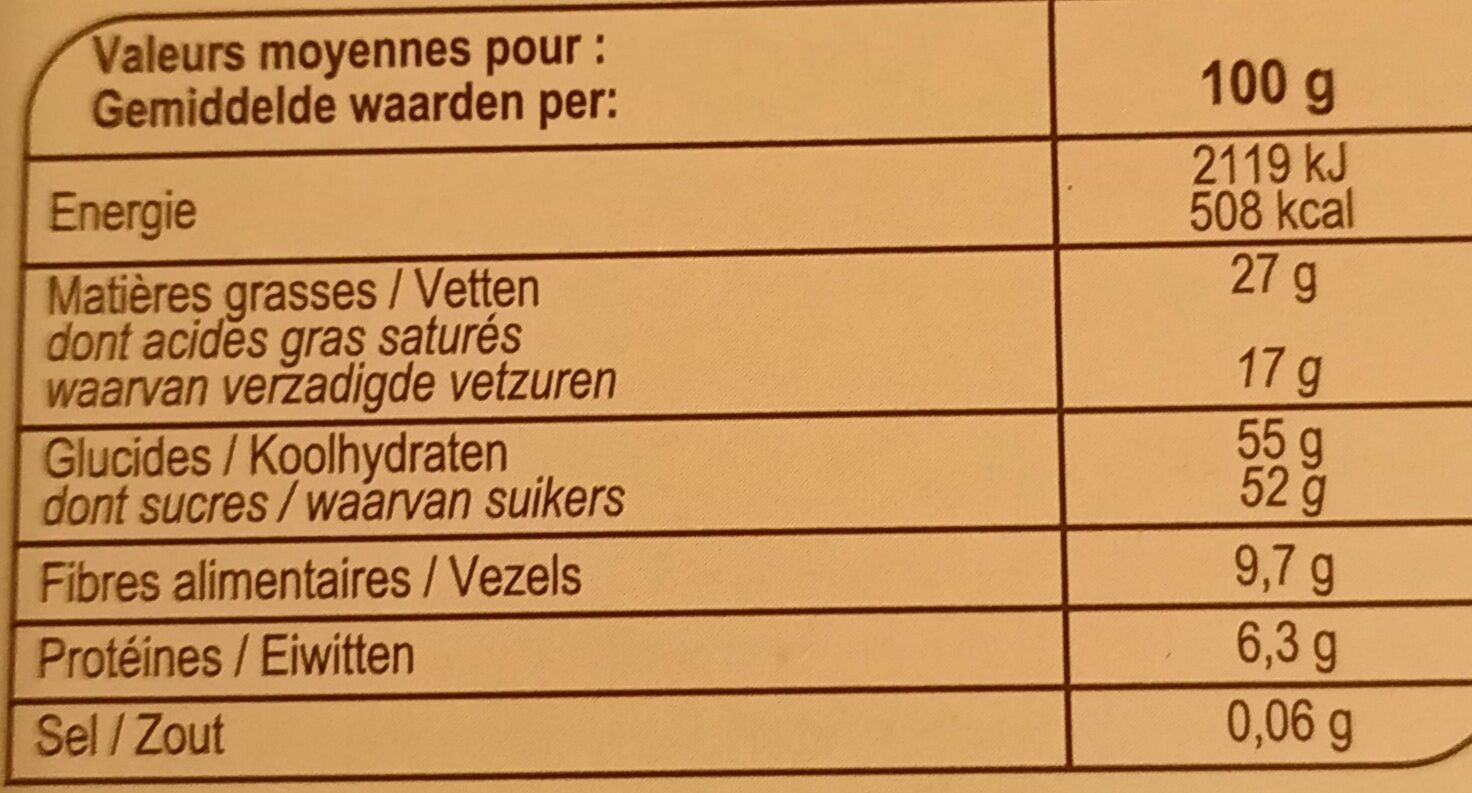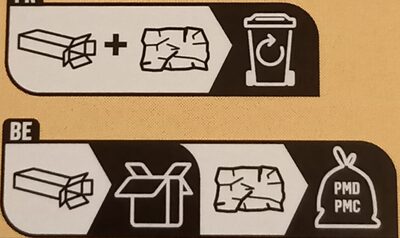Noir orange confite - Carrefour - 200 g
This product page is not complete. You can help to complete it by editing it and adding more data from the photos we have, or by taking more photos using the app for Android or iPhone/iPad. Thank you!
×
Some of the data for this product has been provided directly by the manufacturer Carrefour.
Barra-kodea: 3270190136668 (EAN / EAN-13)
Izen arrunta: Chocolat noir aux écorces d'orange confites.
Kopurua: 200 g
Ontziratzea:
en:Cardboard, en:Green dot, en:Triman, fr:Carton et film à recycler en France, fr:Carton à recycler en Belgique, fr:Film à jeter en Belgique

Markak: Carrefour
Kategoriak: en:Snacks, en:Sweet snacks, en:Cocoa and its products, en:Chocolates, en:Dark chocolates, en:Dark chocolates with orange
Etiketak, ziurtagiriak, sariak:
en:Green Dot, en:Made in France, Nutriscore
Manufacturing or processing places: France
Traceability code: EMB 66136 - Perpignan (Pyrénées-Orientales, France)
Dendak: Carrefour Market, Carrefour
Matching with your preferences
Other information
Conservation conditions: Conservation : à conserver à l'abri de l'humidité, de la chaleur (entre 18°C et 20°C) et d'odeurs parasites. À consommer de préférence avant fin / N° de lot : voir ci-dessous.
Report a problem
Datuen iturria
Product added on by andre
Last edit of product page on by roboto-app.
Produktuaren orria -gatik editatua dorado, ecoscore-impact-estimator, foodless, foodviewer, geodata, kiliweb, manu1400, moon-rabbit, openfoodfacts-contributors, org-carrefour, quechoisir, spotter, teolemon, yuka.ZTYxY09xOFJ2T1JidWZFQXB6N3c4SUoxNmE3NVoyV1lGUE1zSVE9PQ.












